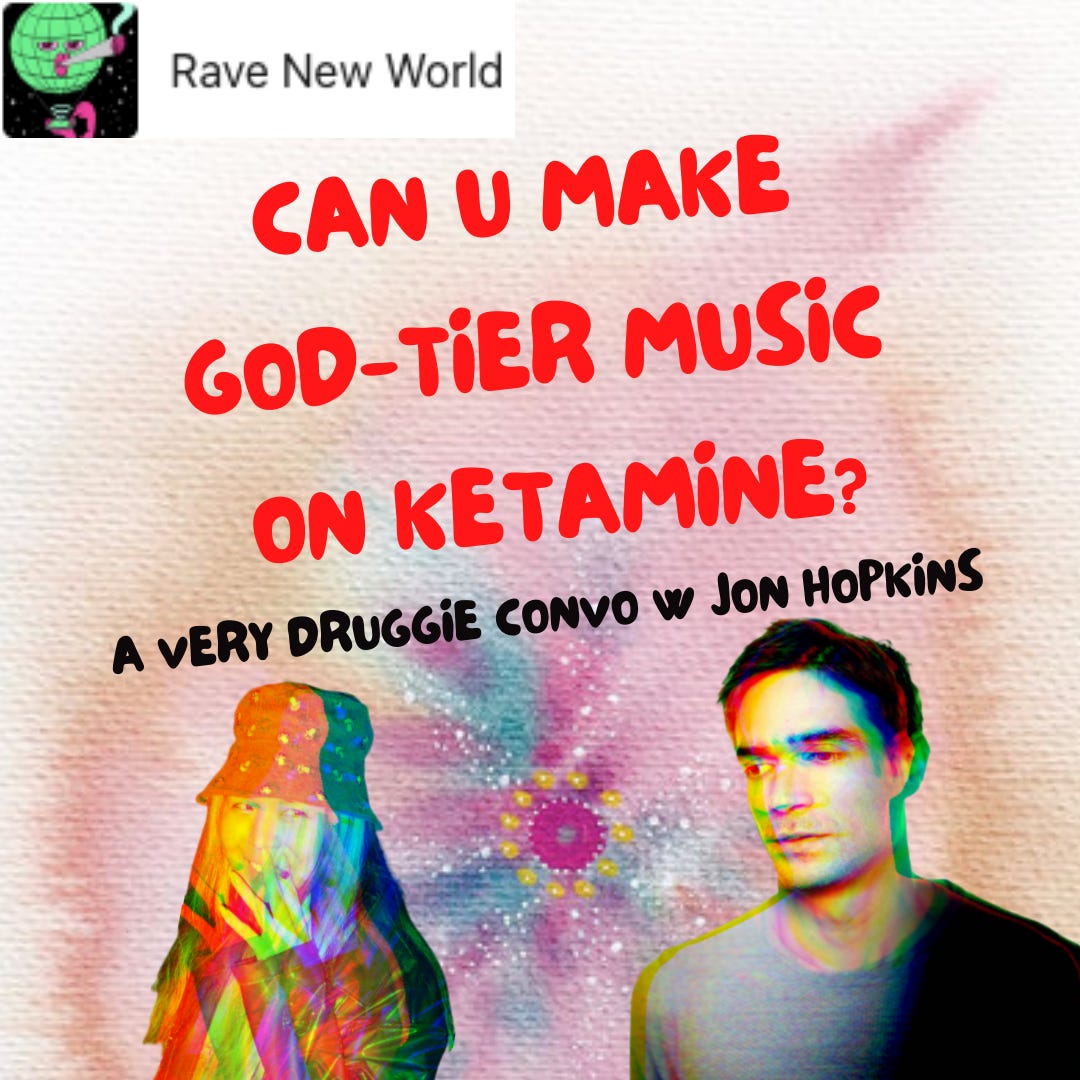CAN YOU MAKE GOD-TIER MUSIC ON KETAMINE?
A very druggie convo with Jon Hopkins about 'Music For Psychedelic Therapy'
Jon Hopkins just dropped his paradigm-shifting new album Music For Psychedelic Therapy on Domino, and I’ve basked in it three ways: the first time, in a hot tub under the full moon on ketamine (highly recommend). The second, at a “ceremonial concert” in Austin where I kept sneaking into the bathroom to hit my DMT vape lol. And most recently, stoned in a dark movie theater in LA equipped with three-dimensional spatial sound, where it felt like I stepped through a yawning portal into the album’s ethereal cosmos—rising into this bodiless realm as a struck crystal bowl in the opening song ascends in tone and twists into synthetic alien frequencies. (If you’ve ever smoked DMT, you know exactly what that eerie ringing sounds like.)
The ambient album takes you on a journey through synesthetic landscapes—spelunking into the tropical caves of Ecuador (where Hopkins spent three days in total darkness taping field recordings with a group of psychedelic researchers), then emerging into topiary speckled with distant birdsong. The second half feels like floating off into some gauzy angelic ether, as cascading washes of gentle tones and glistening synths wrap you in a warm blanket as you dissolve further into the unconscious. There is no “correct” way to make music for psychedelic experiences, but Hopkins’ approach leans towards the palliative and profound—it is soothing and sublime, without crossing into New Age sentimentality (except maybe on the last track, featuring spiritual guru Ram Dass entreating us to “quit the mind and open the heart”—critics seems to love this but I can’t help but cringe).
Recently I sat down with Jon in a hotel lobby in Austin, and the question leaping off my tongue was: how the fuck do you make music on ketamine? I’d read in some PR memo that he’d produced the album during the pandemic on ketamine, a dissociative drug that I’d never associated with creativity or artistic process. Our conversation ended up spiraling into Jon’s evolving relationship with psychedelics, and it turns out the answer to my question was even weirder than I imagined: ketamine—and DMT—had completely revolutionized the way he made music, moving it into the realm of intuition and metaphysics.
Below is our convo, which also touches on themes like: translating music from plants, why DMT elves love synths, the forensic listening experience of ketamine, and why we might be on the precipice of a new genre of music. It might sound crazy if you’ve yet to explore these deeply weird and ineffable spaces, but just hear us out, man.
Keep reading with a 7-day free trial
Subscribe to Rave New World to keep reading this post and get 7 days of free access to the full post archives.



